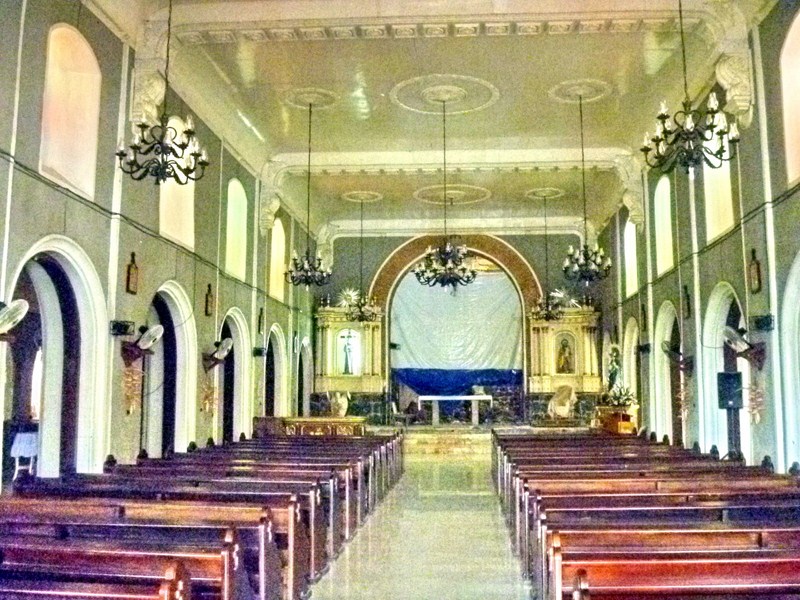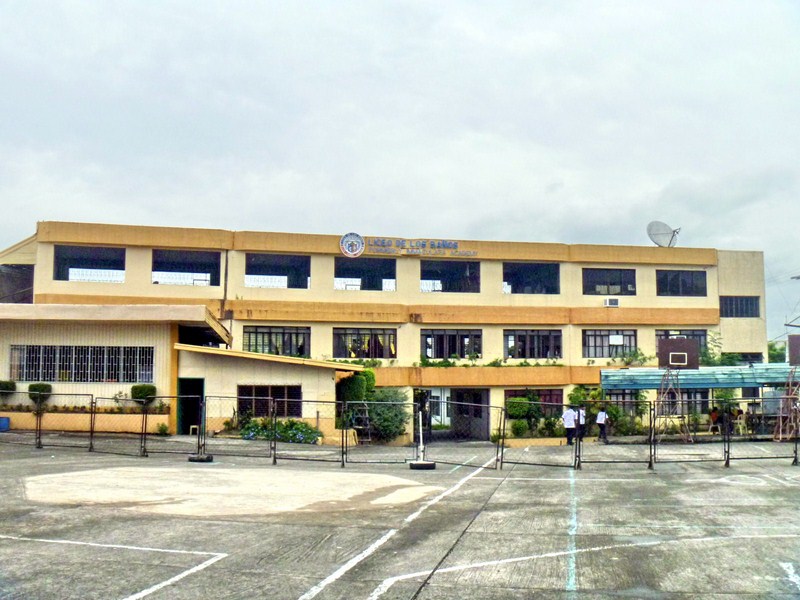After breakfast at the Albergo Hotel in Baguio City, Jandy and I packed just enough clothes for our 2-night stay in Sagada (Mountain Province) and left the rest at the Front Office. From the hotel, we took a taxi to G.L. Liner terminal at the Dangwa Compound along Magsaysay Ave., fronting the Baguio Market. We just missed the previous Sagada-bound bus by minutes so we paid the fare for the next bus, scheduled at 10:30 AM. We spent the next hour at the Baguio Cathedral, climbing the steep stairs along Session Rd. to get there. Here, we had snacks at the coffee shop within the compound before returning to the terminal.
 |
| The now paved Halsema Highway |
A few after our return to the terminal, our designated bus arrived and we boarded the bus, sitting up front, to the right of the driver. Soon, sacks, farm produce as well as luggage and bags were also being loaded around our area, making alighting a problem later for us. We left the terminal just before 11 AM but, just before the interchange leading to La Trinidad Rd., traffic slowed us down due to road rehabilitation. After 30 mins., we left the hustle and bustle of Baguio City and La Trinidad and were now on our way on our long-haul, 6.5-hr. drive to Sagada via the Halsema Highway, the highest highway system in the country.
 |
| Landslides and road slips are still a common occurence |
Formerly called the “Mountain Trail,” this spectacular 146-km. (95 kms. of which are in Benguet) highway traverses Benguet from south to north. Named after Eusebius Julius Halsema (American civil engineer and mayor of Baguio City, 1920 to 1936), it links La Trinidad and Baguio City with Bontoc, Sagada (151 kms.) and Banaue (196 kms.), cutting through mountain peaks, gorges and steep cliffs. This highway was originally a foot trail used by mountain folk between Bontoc and the foot of Mt. Data. U.S. Army engineers improved and widened it. They also built a new winding road through precipitous slopes and traversing high ridges between Acops and Abatan, The road reached Natubleng in 1928 and more than half its length (to Bontoc) was completed in 1931. All told, the highway took more than 15 years to build and was finally completed in 1936.
| Fog can reduce visibility of the driver |
Tracing a circuitous path, this road crosses the massive Cordillera Central mountain range, crossing deep ravines and skirting dangerous slopes. Jandy and I have passed this way before (in 1998), more than half the road then being unpaved, bumpy, rough and dusty. Today, about 95% of the highway is”paved.” Still, landslides are a constant hazard here and big stones and debris tumble from peaks, especially during the rainy and typhoon season. Occasional fog can also ruin a driver’s visibility. However, then and now, we stilled passed through some of the most spectacular mountain vistas found anywhere – magnificent, stonewalled rice and vegetable terraces; swift-flowing rivers spanned by hanging bridges; roadside waterfalls; pine-clad mountains; picturesque villages; etc..
 |
| Vegetable terraces |
 |
| Highest Point Marker in Atok |
About 3 hrs. past Baguio City, we passed (but did not stop at) the Highest Point Marker (Philippine Pali), along Km. 53 (Km. 303), Brgy. Cattubo near Bayangan in Atok. Here, the road crosses 2,450-m. high Mt. Paoay. The highest point of all Philippine highways (7,400 ft. or 2,225 m. above sea level), its viewpoint has good views of Mt. Pulag, Mt. Timbac, Kabayan, Atok and the deep Agno Valley to the south (cloudy during the rainy season).
 |
| A beautiful, terraced mountainside |
Along Km. 63 are the vast Natubleng Vegetable Terraces of Brgy. Natubleng in Buguias. Here, neat rows and upright trellises are planted with temperate-zone climate greens such as Baguio beans, cabbage, carrots and other vegetables and root crops. We also passed the urbanized townships of Sayangan (Atok) at Km. 54 and Abatan (Buguias) at Km. 90.
 |
| The township of Abatan in Buguias |
















.jpg)

.jpg)
.jpg)
.jpg)
.jpg)
.jpg)
.jpg)









